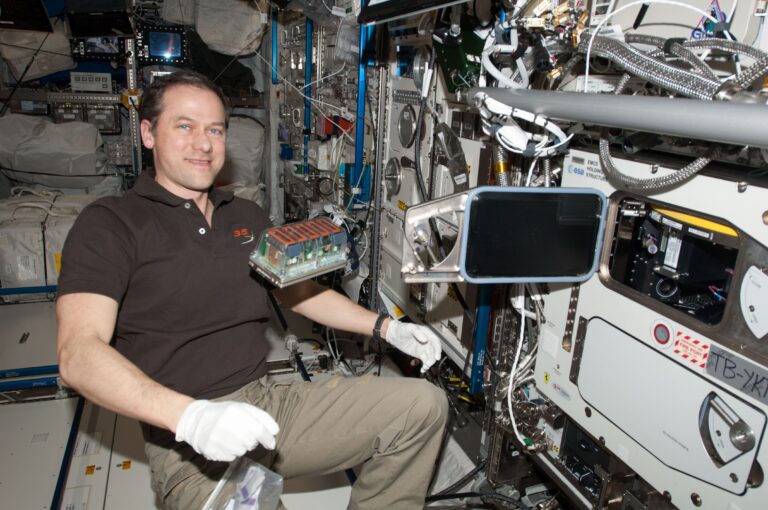- Full Name: European Modular Cultivation System (EMCS)
- Affiliation: ESA
- Manufacturer: EADS-ST Friedrichshafen
- Country: Germany
- Focus Areas: Plant Habitat
- Type: Spaceflight
- Spacecraft: International Space Station
- Key Features:
-
-
- Centrifuges to spin up partial gravity
- Gas supply
- Thermal control system
-
Summary
The European Modular Cultivation System (EMCS) was built for plant research, but could also hold experiments on small animals (insects and small invertebrates). It was funded by the European Space Agency (ESA), and was developed by an industrial team led by the German company EADS-ST Friedrichshafen. Specialists at NASA’s Ames Research Center optimized it for certain experiments by developing experiment-unique hardware.
It was installed on the ISS in the US Destiny module (2006-08), and the European Columbus module (2008). The EMCS hosted a wide variety of plant experiments that helped scientists understand imaging systems, plant movement, plant membrane proteomes, plant growth and development, cell-wall genetics, and plant tropisms in space. The centrifuges (sometimes called rotors) allow researchers to apply different levels of gravity (0.001 g to 2.0 g) to the experiment containers (ECs). Centrifuges allow researchers to apply “gravity” at the same level as you would find on the Earth, the Moon, or Mars, allowing astronauts to test how well plants might grow in lunar or Martian gravity.


Chamber Components
- 2 centrifuges holding a total of 8 experiment containers (ECs)
- Experiment containers
- Room for plant specimens up to 6cm x 6cm x 16cm
- Membrane filters trap particulates in air
- Sensors monitor air temperature and pressure
- Nutrient delivery system customizable
- Life support and water supply system
- Illumination system (red and white LEDs)
- Gas supply module
- 30% oxygen, 70% nitrogen and carbon dioxide, stored in gas bottles
- Air is conditioned by the Atmospheric Control System (ACS), ethylene is filtered out, and evaporated water is recycled for plants to reuse
- Thermal control system
- Video camera system (only on two of the four containers per centrifuge)
References
- Review and analysis of plant growth chambers and greenhouse modules for space (link)
- Review and analysis of over 40 years of space plant growth systems (link)
- Experiment Unique Equipment for the European Modular Cultivation System (link)
- Research Containing: European Modular Cultivation System (link)
- ESA experiments with the european modular cultivation system (EMCS) (link)
- European Modular Cultivation System (EMCS) operations, utilization, facility description, and specifications (link)
- A Researcher’s Guide to the International Space Station: Plant Science (link)
- European Modular Cultivation System (link)
- A Different Kind of Green Movement: Seedling Growth in Space (link)

